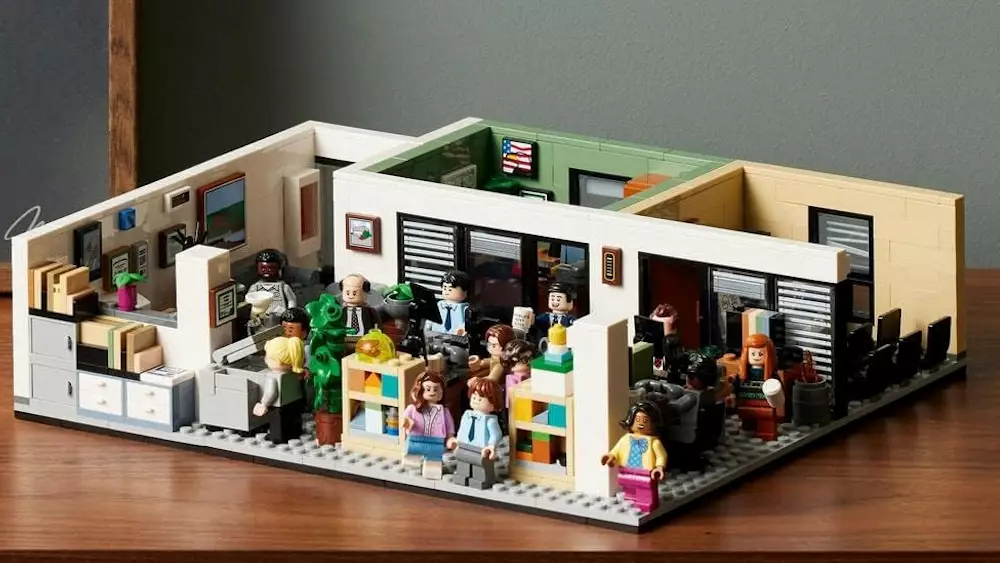Amidst the ever-evolving landscape of television, Peacock’s announcement of its follow-up to the beloved “The Office” titled “The Paper” has stirred a whirlwind of anticipation. Set to grace our screens in September, “The Paper” marks a significant return to a world many fans thought they had left behind. The iconic mockumentary style that turned “The Office” into a cultural phenomenon is expected to resurface, inviting both new and old viewers to witness the humorous chaos that only a workplace can provide. This revival reminds us how a simple office can be a carousel of emotions, banter, and memorable moments that resonate long after the credits roll.
As fans eagerly await what is sure to be a humorous exploration of narratives from Toledo, Ohio, they also seek to reconnect with the palpable nostalgia surrounding the original series. The Office presented a vibrant tapestry of quirky characters, interweaving personal growth and comedic misadventures, which is a challenge for any new series to replicate. However, the charm of its legacy persists, underscoring why viewers will remain invested in its continuation.
The Enduring Allure of “The Office” Lego Set
In addition to the excitement surrounding “The Paper,” another fascinating aspect has amplified fan engagement: the recently discontinued Lego set depicting Dunder Mifflin’s Scranton branch. This remarkably intricate model, featuring 1,164 pieces, serves as a love letter to the show’s fandom. Lego’s decision to retire this set at the end of 2024 has intensified its desirability, creating a rush among collectors and enthusiasts alike. The nostalgic draw lies not only in building a representation of an iconic workplace but also in the confluence of childhood play and adult nostalgia, offering a seamless blend of entertainment and artistry.
Moreover, the inclusion of 15 minifigures, from the charmingly oblivious Michael Scott to the intense Dwight Schrute, enhances the Lego experience, allowing fans to recreate iconic scenes that define the series. For example, the kit includes accessories like Michael’s storied screenplay for “Threat Level Midnight,” elevating the nostalgia factor as users can replicate peculiar antics from the show. In this manner, the Lego set does more than merely appeal to our hands; it stimulates our minds, urging us to remember and celebrate past episodes.
The Rush to Secure a Piece of History
As the popularity of the Lego set unfolds, retailers respond to the renewed interest with varying supplies. Currently, Walmart stands out as the sole retailer keeping the set at its original price of $120, contrasted sharply against inflated reseller prices on platforms like Amazon, where values can soar to $140 or even higher. This price discrepancy highlights the desperate competition among fans eager to lay claim to a piece of their past. Shopping, inherently nostalgic when it taps into beloved media, transforms into a quest for value amid consumerism—a race to secure memories encapsulated in plastic bricks.
Supporting our nostalgia, it becomes essential to leverage available discounts effectively. Why spend extra when a little diligence can save fans upwards of $20? Those savings could contribute toward acquiring the complete DVD series or a subscription to Peacock, ensuring continued access to the unfolding adventures of Dunder Mifflin and beyond through “The Paper.”
Connecting the Dots Between Past and Present
In the landscape of modern entertainment, the revival of forgotten shows often prompts an explosion of associated merchandise, merchandise that taps into our emotional connections and fond reminiscences. “The Paper,” alongside merchandise like the Lego set, exemplifies how nostalgia can be strategically capitalized upon, offering fans something tangibly relatable in today’s fleeting media environment. This approach turns the growth of a fanbase not only into a phenomenon driven by new content but into a collective journey of shared experiences rooted in cherished past moments.
Ultimately, the unfolding narrative surrounding “The Paper” and the Lego set fosters a participatory culture among fans that transcends television viewership alone. It creates a space where characters and episodes live on vibrantly in the form of bricks and minifigures, allowing for continual engagement with the stories that defined a generation. As the countdown to September begins, it’s not just about consuming content; it’s a celebration of connection, creativity, and the brilliant absurdity of workplace humor that has inspired us all.


Leave a Reply